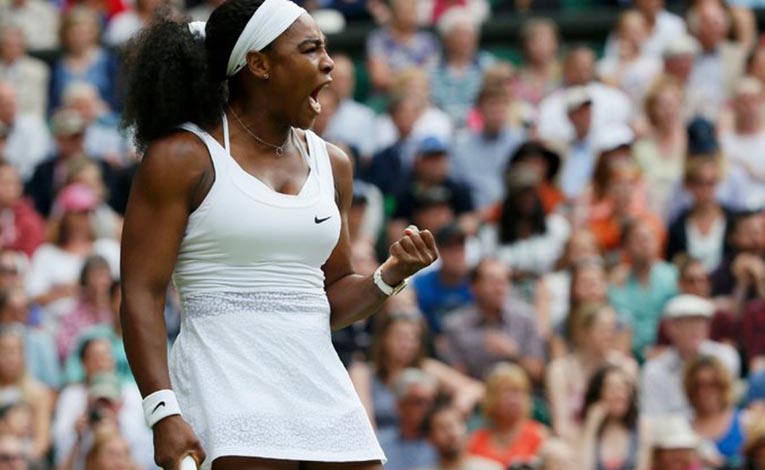WIMBLEDON, England — While most celebrities go incognito behind a hat and sunglasses, Serena Williams uses a different tactic to blend into a crowd: long sleeves.
During an appearance on Home Shopping Network for her clothing line, Williams said that one particular long-sleeved garment would help her go unnoticed in public.
“My arms are really fit, but I wanted to cover them, because when I do people don’t recognize me as much,” she said.
Williams, who will be vying for the Wimbledon title against Garbiñe Muguruza on Saturday, has large biceps and a mold-breaking muscular frame, which packs enough power to have dominated women’s tennis for years. Her rivals could try to emulate her physique to be able to match her musculature. But most of them choose not to.
Despite Williams’s success — a victory Saturday would give her 21 Grand Slam singles titles and her fourth in a row — body-image issues among female tennis players persist, compelling many players to avoid bulking up.
“It’s our decision to keep her as the smallest player in the top 10,” said Tomasz Wiktorowski, the coach of Agnieszka Radwanska, who is listed at 5 feet 8 and 123 pounds. “Because, first of all she’s a woman, and she wants to be a woman.”
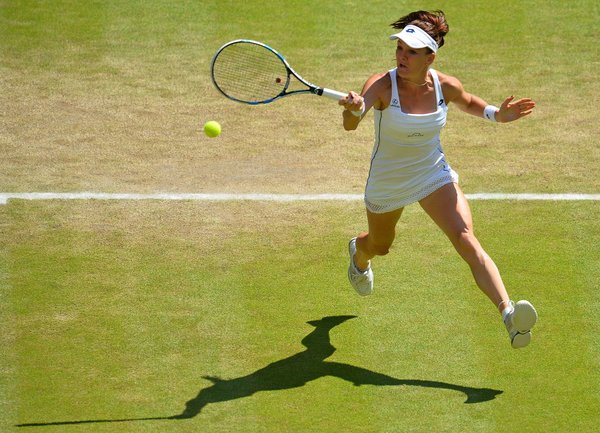
Radwanska, who struggled this year before a run to the Wimbledon semifinals, said that any gain in bulk could hurt her trademark speed and finesse, but she also acknowledged that how she looked mattered to her.
“Of course I care about that as well, because I’m a girl,” Radwanska said. “But I also have the genes where I don’t know what I have to do to get bigger, because it’s just not going anywhere.”
She added: “Serena is strong and powerful, and that’s the way she is playing. I wish I would win 20 Grand Slams like her, but I don’t know if I would play better tennis if I looked like her.”
For many, perceived ideal feminine body type can seem at odds with the best physique for tennis success. Andrea Petkovic, a German ranked 14th, said she particularly loathed seeing pictures of herself hitting two-handed backhands, when her arm muscles appear the most bulging.
“I just feel unfeminine,” she said. “I don’t know — it’s probably that I’m self-conscious about what people might say. It’s stupid, but it’s insecurities that every woman has, I think. I definitely have them and I’m not ashamed to admit it. I would love to be a confident player that is proud of her body. Women, when we grow up we’ve been judged more, our physicality is judged more, and it makes us self-conscious.”
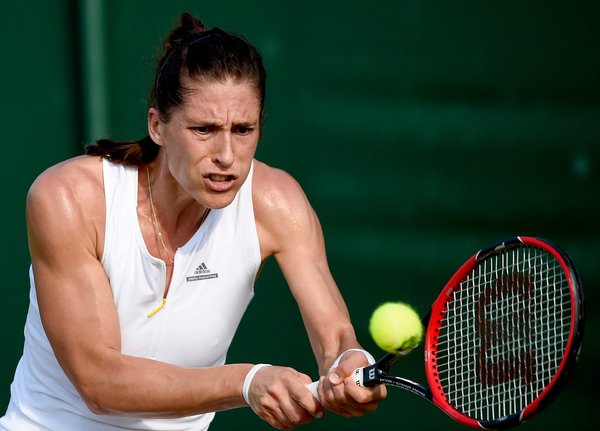
Petkovic said that people who meet her in person often remark that she is smaller than she looks in photographs and on television.
“People say, ‘Oh you’re so skinny, I always thought you were huge,’ ” she said. “And then I feel like there are 80 million people in Germany who think I’m a bodybuilder. Then, when they see me in person, they think I’m O.K.”
Williams, 33, has been gawked at, mocked and celebrated throughout her career, and she said growing confident and secure in her build was a long process.
“I don’t touch a weight, because I’m already super fit and super cut, and if I even look at weights, I get bigger,” she said. “For years I’ve only done Thera-Bands and things like that, because that’s kind of how I felt. But then I realized that you really have to learn to accept who you are and love who you are. I’m really happy with my body type, and I’m really proud of it. Obviously it works out for me. I talk about it all the time, how it was uncomfortable for someone like me to be in my body.”
Not all players have achieved Williams’s self-acceptance.
“That is really an important acceptance for some female athletes, that their best body type, their best performance build, is one that is not thin; it’s one of power,” said Pam Shriver, a former player and current tennis analyst.
Shriver, who cited Angelique Kerber and Sabine Lisicki as similarly powerfully built, believes Williams’s physique and confidence should serve as an example to others.
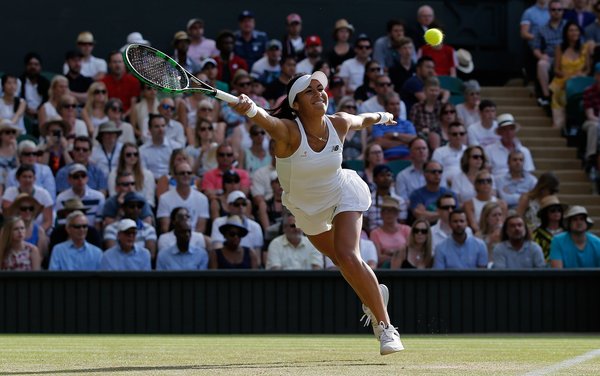
“The way Serena wears her body type I think is perfect,” Shriver said. “I think it’s wonderful, her pride. It is what it is. Even when she’s at her fittest, she is a powerfully built, big athlete. She is never going to be slight, and I think her acceptance of that makes her a great role model for a lot of athletes.”
Heather Watson said that she was proud of how she looked and that she thought she and her fellow players had some of the best bodies possible.
“I actually like looking strong,” Watson said. “I find strong, fit women a lot more attractive than lanky no-shape ones.”
Like many others, Caroline Wozniacki said that putting herself in the best shape for tennis would be the priority until she stopped playing, when she could then trim down.
“Right now I’m a tennis player, so I’m going to do everything I can to be the best tennis player that I can be,” said Wozniacki, who was featured in the Sports Illustrated swimsuit issue last year. “If that means that I need to add a little muscle to my legs or my butt or whatever, then that’s what I’m going to do. I can be a model after I finish.”
Madison Keys, a 20-year-old American, was recently angered by a television show in which men discussed their picks for the most attractive female athletes.
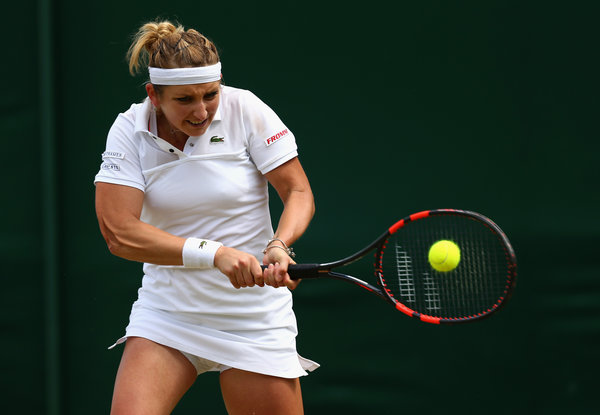
“One of the guys on it was like, ‘Well, aren’t they all really masculine?’ and I kind of took it personally,” Keys said. “I was like, ‘No, I’m not, actually.’ I think it still is a little bit against kind of what society thinks that you should be doing. But at the same time, I get to play a sport and have fun, and they have to go to an office somewhere.”
Timea Bacsinszky, who openly discusses the work she has done with a psychologist to come to grips with her childhood and playing career, said she had become more comfortable with her body, which was difficult when she was a teenager, and more at peace with the emphasis placed on appearance in the sport.
“If I’m getting bigger, then I’m getting bigger,” Bacsinszky, 26, said, adding, “ I know if it’s for my sport, and the good of my forehand and my backhand and my serve, then I will do it.”
Maria Sharapova, a slender, blond Russian who has been the highest-paid female athlete for more than a decade because of her lucrative endorsements, said she still wished she could be thinner.
“I always want to be skinnier with less cellulite; I think that’s every girl’s wish,” she said, laughing.
Sharapova said she avoided weights in her training, instead focusing on stretching and preventive exercises, which she believes are more beneficial for tennis than adding muscle.
“I can’t handle lifting more than five pounds,” Sharapova said. “It’s just annoying, and it’s just too much hard work. And for my sport, I just feel like it’s unnecessary.”
Eugenie Bouchard, who was often dubbed “the next Maria Sharapova” as she ascended the rankings last year, has become thinner as her results have fallen off this year, and now hopes to gain more strength. She said that while her build was unlikely to make her resemble the Hulk no matter how hard she tried, a visible increase in muscle would be welcome.
“If I start to see it, I’ll be happy,” Bouchard said. “If it’s what you need to lift trophies, who cares what you look like?”
Courtesy of: NY Times
